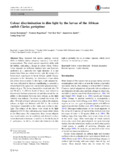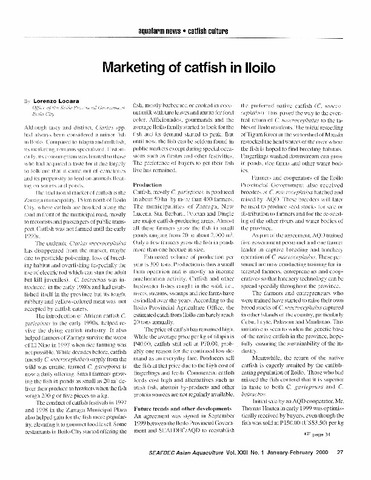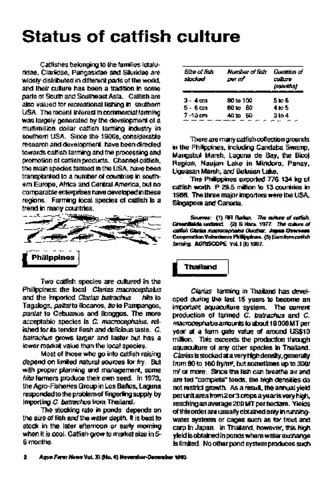| dc.contributor.author | Kawamura, Gunzo | |
| dc.contributor.author | Bagarinao, Teodora | |
| dc.contributor.author | Asmad, Mohamad Faizal Bin | |
| dc.contributor.author | Lim, Leong-Seng | |
| dc.date.accessioned | 2024-02-19T07:46:04Z | |
| dc.date.available | 2024-02-19T07:46:04Z | |
| dc.date.issued | 2017 | |
| dc.identifier.citation | Kawamura, G., Bagarinao, T. U., Asmad, M. F. B., & Lim, L.-S. (2017). Food colour preference of hatchery-reared juveniles of African catfish Clarias gariepinus. Applied Animal Behaviour Science, 196, 119–122. https://doi.org/10.1016/j.applanim.2017.06.013 | en |
| dc.identifier.issn | 0168-1591 | |
| dc.identifier.uri | http://hdl.handle.net/10862/6517 | |
| dc.description.abstract | Food colour preference is a fundamental aspect of food recognition and has practical application in the formulation of artificial diets and the design of visual baits. Food colour affects growth performance and feed efficiency in captive fishes. This study determined the food colour preference of the juveniles of the African catfish Clarias gariepinus under natural light in a roofed hatchery. A group of 20 juveniles were held in a transparent aquarium whose background colour was made white, blue, green, red, or black. The test food was diced shrimp flesh dyed blue, green, red, and yellow, with non-dyed natural flesh as the white control. In the food colour preference test, the catfish were presented the shrimp flesh in a pair of different colours at a time. The colour of the food that was first approached and ingested, i.e., the first response, was recorded. All the 10 possible food colour pairs were tested against five background colours. Quantitative analysis of the frequency of first response was done by χ2 test and Thurstone’s law of comparative judgment. The juveniles exhibited clear food colour preference that varied with the background colours. Against the black background, the first response was significantly biased to red shrimp flesh. Against the red and blue backgrounds, red and blue shrimp flesh were significantly preferred. Against the white and green backgrounds, no significant color preference was detected. Overall, juvenile African catfish preferred red and blue coloured shrimp flesh. This distinct preference for red and blue food could not be explained by associative learning (brown feed in the hatchery) and seemed innate. | en |
| dc.language.iso | en | en |
| dc.publisher | Elsevier | en |
| dc.subject | Clarias gariepinus | en |
| dc.subject | food colourants | en |
| dc.subject.lcsh | Catfishes | en |
| dc.title | Food colour preference of hatchery-reared juveniles of African catfish Clarias gariepinus | en |
| dc.type | Article | en |
| dc.citation.volume | 196 | en |
| dc.citation.spage | 119 | en |
| dc.citation.epage | 122 | en |
| dc.citation.journalTitle | Applied Animal Behaviour Science | en |
| dc.subject.asfa | catfish culture | en |
| dc.subject.asfa | food additives | en |
| dc.subject.asfa | juveniles | en |
| dc.subject.asfa | feeding preferences | en |
| dc.identifier.doi | 10.1016/j.applanim.2017.06.013 | |
| dc.subject.scientificName | Clarias gariepinus | en |
| local.subject | Red and blue food preference | en |
| local.subject | First response | en |
| local.subject | Background colour | en |
| local.subject | Thurstone's law | en |
| local.subject | African catfish | en |



